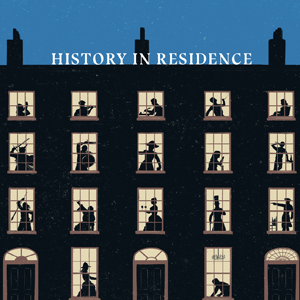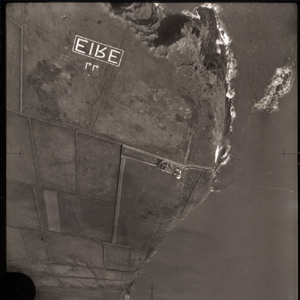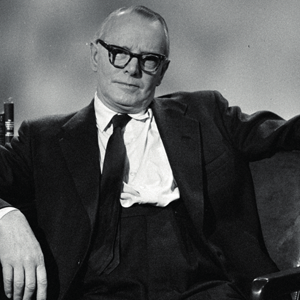History in Residence
Published in Issue 2 (March/April 2020), Reviews, Volume 28Newstalk 106:
https://www.newstalk.com/documentary-and-drama-on-newstalk/history-residence-documentary-newstalk-947108
The Emergency: creative freedom in wartime Dublin
BBC Radio 3: https://www.bbc.co.uk/programmes/m000djfh
19 January 2020
By John Gibney
Coincidentally, on Sunday 19 January two different radio stations broadcast two very different documentaries on the history of Dublin. One notable aspect of the ongoing ‘decade of centenaries’ has been the degree of public interest in and engagement with the events being marked. This was especially true of the centenary of the Easter Rising in 2016, and it prompted Dublin City Council to create six positions for ‘Historians-in-Residence’ across the Dublin metropolitan area (with some regular contributors to History Ireland being among the previous holders of the positions). Dublin City Council, and especially its library services, has shown an exceptional commitment to ‘public history’ through initiatives such as the enormously successful Dublin Festival of History, not to mention a wide range of exhibitions and publications.

The project is still ongoing, and Brian Byrne’s History in Residence followed the six current holders of the posts—Maeve Casserly, James Curry, Bernard Kelly, Cormac Moore, Mary Muldowney and Cathy Scuffill—in the course of some of their activities.
The Historians-in-Residence initiative can undoubtedly be categorised as ‘public history’, a concept that has become increasingly prominent in recent years, with a definite shift towards active engagement, often in diverse and imaginative ways, with the public by historians both inside and outside the academy. History is a notoriously unreflective discipline, but theoretical perspectives are undoubtedly important. In the case of public history the concept is surely hollow without the practice of engaging the said public. Often drawing upon the extremely rich holdings of Dublin City Library and Archive, the unquestionably proactive historians-in-residence carry out an extraordinarily wide range of outreach activities across the Dublin City Library network and beyond, with audiences ranging from schoolchildren to the residents of nursing homes.
The voices of the historians-in-residence came through in Byrne’s somewhat disjointed documentary, which would have benefited from a tighter focus and fewer gratuitous musical interludes. It would also have been nice to delve a bit more into the nature of the outreach activities carried out by the historians and, indeed, into the challenges faced by public history in Ireland. That said, it served as a good introduction and overview of a pioneering initiative that, slowly but surely, is being emulated by other local authorities across the state. Follow the project on Twitter at @DubHistorians.

Over on BBC Radio 3, The Emergency took a more orthodox approach to its subject. Produced by Regan Hutchins, it looked at the experience of the Irish capital during the Second World War from the point of view of cultural life and the creativity of artists active in Dublin during the ‘Emergency’. Mixing the chosen theme with more generalised commentary on the period, it seemed tailored for a British audience who were unfamiliar with the subject, but it nevertheless cast an interesting light on the period that many Irish listeners would learn from. The Irish experience of the Second World War remains contentious and can often be couched in somewhat clichéd terms, though these were largely avoided in what was a tour of the cultural life of Dublin between 1939 and 1945 (the ‘glimmerman’ of Dublin folklore was conspicuously, if mercifully, absent).
The focus was on a handful of artists and commentators, with the writer Seán Ó Faoláin, the Irish-German dance pioneer Erina Brady and the painters of the ‘White Stag’ group being especially prominent. This was framed within wider discussions with historians and critics such as Clair Wills, Diarmaid Ferriter, Deirdre Mulrooney and Tommy Graham of this parish. Independent Ireland can all too easily be comprehensively and lazily categorised as a dour, clericalist cultural backwater; a documentary such as this is a corrective to such notions, highlighting the reality that cultural life remained part of the fabric of Irish life more broadly.

This will inevitably be, however, a perspective that focuses upon an élite, for want of a better term. And by effectively not mentioning the war, a contrast between the image of a conservative society versus the alluring bohemianism on display here can create an image of the Emergency as something that might not be taken too seriously. If Irish neutrality and the imposition of censorship darkened Dublin’s cultural life in wartime, this documentary was hobbled somewhat by the fact that it offered little consideration of the rationale for Irish neutrality (perhaps a lost opportunity, given that it went out on the BBC) and how that shaped the cultural and intellectual world of its subjects. The key objective of Eamon de Valera’s government was to ensure that Ireland would not be reduced to the status of what one Irish diplomat described as a ‘barren German fortress’. Listeners to this might be surprised to hear that Dublin was bombed during the war, albeit on a scale that cannot be compared to the devastation visited upon so many British cities. Nevertheless, the bombing of Dublin’s North Strand in 1941 was the most obvious example of what fate might have befallen Dublin (and the rest of independent Ireland) should it have become embroiled in the war. Ó Faoláin may well have bemoaned the fact that Ireland’s wartime censorship cut off knowledge of the outside world, but had reality fully intruded it would surely have done so in horrific fashion. Caveats aside, this was an engaging programme that explored an aspect of life in independent Ireland from a relatively novel angle. Both this and History in Residence remain available to stream or download on-line; listeners can decide for themselves.
John Gibney is Assistant Editor with the Royal Irish Academy’s Documents on Irish Foreign Policy series.
















